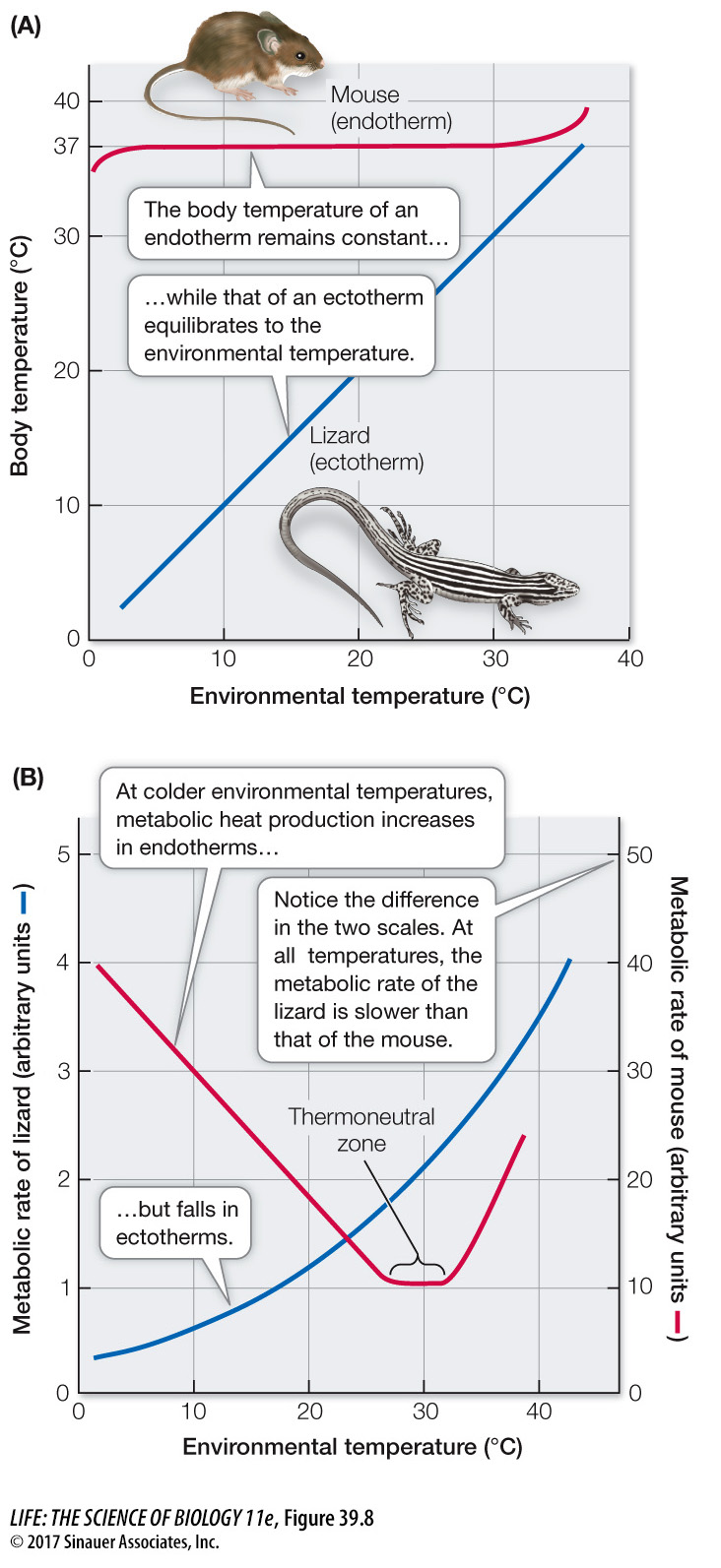Ectotherms and endotherms respond differently to changes in environmental temperature
How do similar-

Q: In the plot of body temperature versus environmental temperature, why does the mouse curve fall on the far left side and rise on the far right side? In the plot of metabolic rate versus environmental temperature, why does the mouse’s metabolic rate rise at higher temperatures?
The fall of the mouse’s temperature at cold environmental temperatures and its rise at high environmental temperatures indicates the limitations on the mouse’s ability to regulate its body temperature. At high environmental temperatures, the mouse’s metabolic rate rises because active heat loss (e.g., sweating, panting, or licking) requires energy.
This experiment might lead us to conclude that the ectotherm cannot regulate its body temperature, but observations of the lizard in nature do not support this conclusion. In nature, the lizard can regulate its body temperature quite well, although it does so by behavioral mechanisms rather than by altering its internal metabolic heat production. Air temperature in the desert can fluctuate by 40°C or more in a few hours; the lizard, however, can limit its variation in body temperature and even maintain a fairly stable body temperature by using behavior to alter its heat exchange with the environment. Its behavioral strategies include spending time in a burrow, basking in the sun, seeking shade, climbing vegetation, and changing its orientation with respect to the sun.
Endotherms also use behavior as a first line of defense against thermal stress. They select the most comfortable thermal environment possible. They change posture or their orientation to the sun, move between sun and shade, and move between still air and moving air. Examples of more complex thermoregulatory behaviors include nest construction and social behaviors such as huddling. Humans put on or remove clothing and burn fossil fuels to generate the energy to heat or cool buildings.